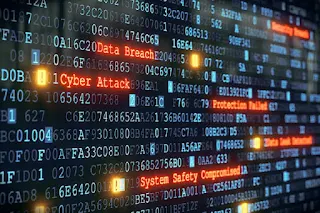Data Security Breach Reporting: Importance, Steps, and Best Practices
Data security breaches can have serious consequences for individuals and organizations. These breaches can result in theft of sensitive information, financial loss, damage to reputation, and even legal liabilities. As such, reporting data security breaches is crucial for all affected parties to take appropriate actions to mitigate the damage and prevent future breaches.
In this blog, we will discuss the importance of reporting data security breaches, the steps involved in reporting, and some best practices to follow.
Why Reporting Data Security Breaches is Important
Reporting data security breaches is essential for several reasons:
- Identify the Source of the Breach
Reporting a breach helps identify the source of the breach, allowing authorities to take necessary steps to apprehend the perpetrator. Identifying the source of the breach also helps prevent future breaches and minimize damage to affected parties.
- Protect Affected Parties
Reporting a data breach allows affected parties to take necessary precautions to protect themselves from potential harm. For example, if an individual's personal information was stolen, they may want to monitor their financial accounts and change their passwords to prevent further damage.
- Legal Obligations
In many jurisdictions, organizations have a legal obligation to report data breaches. Failure to report breaches can result in legal liabilities, fines, and damage to reputation.
Steps for Reporting a Data Breach
Reporting a data breach involves several steps:
- Contain the Breach
The first step is to contain the breach to prevent further damage. This involves shutting down affected systems, isolating infected devices, and preventing access to sensitive information.
- Assess the Damage
The next step is to assess the damage caused by the breach. This involves identifying what information was accessed, how many people were affected, and what potential harm could arise.
- Notify Affected Parties
Organizations should notify affected parties as soon as possible after a breach. This allows individuals to take necessary precautions to protect themselves from potential harm. Notifications should be clear, concise, and provide information on how to take action.
- Report the Breach to Authorities
Organizations should report the breach to relevant authorities, such as law enforcement or regulatory bodies. This allows authorities to investigate and take necessary actions to prevent future breaches.
- Review and Improve Security Measures
After a breach, organizations should review their security measures to identify gaps and weaknesses. This allows them to improve their security measures and prevent future breaches.
Best Practices for Reporting Data Breaches
To effectively report data breaches, organizations should follow these best practices:
- Have a Response Plan in Place
Organizations should have a response plan in place before a breach occurs. This plan should outline the steps to take in the event of a breach, including who to contact, how to contain the breach, and how to notify affected parties.
- Be Transparent
Organizations should be transparent about breaches, providing clear and concise information about what happened and how it will affect affected parties. This helps build trust and credibility.
- Act Quickly
Organizations should act quickly when a breach occurs, containing the breach and notifying affected parties as soon as possible. Delaying notifications can result in greater harm to affected parties and damage to reputation.
- Train Employees
Organizations should train employees on how to identify and prevent data breaches. This includes providing training on how to recognize phishing scams, how to create strong passwords, and how to report suspicious activity.
In conclusion, reporting data security breaches is crucial for organizations to identify the source of the breach, protect affected parties, and comply with legal obligations. Organizations should have a response plan in place, be transparent, act quickly, and train employees on how to prevent data breaches. By following these best practices, organizations can minimize the damage caused by data breaches and prevent future breaches from occurring.




Comments
Post a Comment